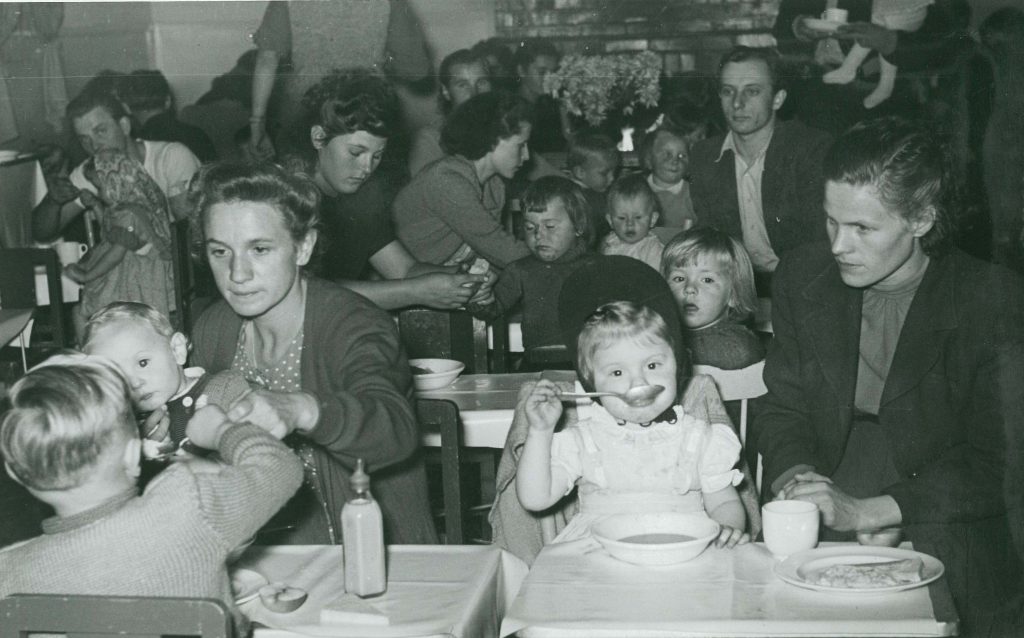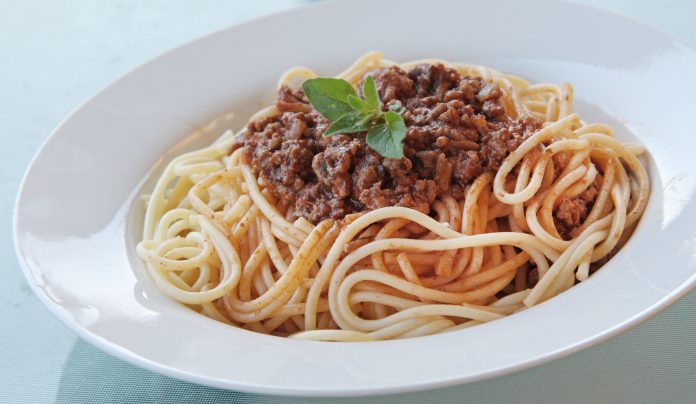Tangling with an Italian and their spaghetti is never a good idea.
This was a hard lesson learned for the management of Bonegilla Migrant and Reception Training Centre in the middle of last century.
Newly-arrived continental Europeans who were served fatty neo-British meals, usually involving mutton, often found the mess-camp menu at Bonegilla too hard to stomach.

Attempts to introduce pasta splashed with bottled tomato sauce did little to appease the many Italians experiencing a much longer-than-expected stay at the former army base.
Promises they had been given for a new life in Australia had amounted to little more than internment while waiting for jobs that didn’t exist.
Bored, angry and homesick for a decent bowl of pasta, a resistance was formed and the Italians threatened to burn the facility to the ground unless conditions changed.
A group of 600 Italian men each holding a plate of “so called” spaghetti confronted the director of the camp, demanding he come out of his house and face them.
“Is this the food you expect us to eat,” they are reported to have yelled.
When the director yelled back: “I don’t like spaghetti. I don’t eat it and I will never eat it,” the men hurled the spaghetti at his doorstep.
With a riot on their hands, management called in the army and tanks were put on standby.
Fortunately, things simmered down. European cooks were quickly employed to oversee kitchen operations and jobs were also created for the idle migrants.

The spaghetti revolution, however, is one of the many stories of Australia’s rich multicultural history that can be traced back to Albury-Wodonga.
The significance of Bonegilla and the role it played in the country’s ‘populate or perish’ post-World War Two immigration scheme is acknowledged by its inclusion on the National Heritage List.
Bonegilla was the first migrant camp to open in Australia, the longest-running and the largest. Approximately 320,000 men, women and children from 35 different ethnic backgrounds passed through its rudimentary doors.
Significantly, it is estimated that one in 20 Australians is now connected to a Bonegilla migrant.
One of these descendants is Wodonga City Council’s Tourism Team Leader, Bernadette Zanet. Her Italian-born father, Guiseppe ‘Joe’ Zanet, and father-in-law, Marziale ‘Marty’ D’Alessandro, both spent time at Bonegilla (Joe says he was there during the riots but said he played no part).
Border Café caught up for a chat with Bernadette in the old mess hall of Block 19, the only section spared from demolition when the camp closed.

Still owned by the army at the time, Block 19 was later used to train cooks for the Vietnam War.
The dining area is a new exhibit at what is now known at Bonegilla Migrant Experience, a tourism facility operated by Wodonga City Council since 2013.
Differing table settings and furniture styles on display reflect the many changes that occurred in the mess hall from its opening in 1947 to closure in 1971.
Samples of original menus are on display, along with industrial wood-fired boilers and large cold store rooms that were constantly depleted and replenished to feed the masses.
If the kitchen is the heart of the home, Bonegilla’s food and meal preparation areas played a key role for migrants who stayed at the camp.
Bernadette agrees and says a ‘welcoming’ hot meal was served to newly arriving migrants within 65 minutes of arrival.
In 1949, The Border Mail reported that a seven-day menu may have been monotonous but it had fresh meat, vegetables and fruit with unlimited supplies of milk and bread.
While there was no luxury at the camp, the food was “plain but nutritious and plenty.”
Feedback from migrants themselves tells a mixed story.
In 1949, Victor from Hungary considered it ‘an abundance of nourishing food’. In the same year, Alma from Estonia said, ‘We never went short of food at Bonegilla, but I got sick of continuously eating mutton and lamb’.
Stefano from Italy was not so polite. “The food was atrocious,” he stated a few years later. Gerda from Germany was also critical of the limited Bonegilla menu, stating, “You only had to look at your plate to know what day of the week it was.”
Another issue with Bonegilla’s mess-style catering, according to Bernadette, was that it ‘took away’ a lot of self-determination from the migrants and many other things often taken for granted.
This included the social side of buying and sourcing food, the ‘coming together’ of family and friends and freedom for parents to feed their children what they wanted, when they wanted.

There is much to celebrate about Australia’s mass migration program last century, including realisation of the Snowy Mountains hydroelectric scheme, Australia’s largest engineering project.
Some migrants, however, carry dark memories of hardship, exploitation and misrepresentation. For them, Bonegilla wasn’t a happy place, as commonly expressed in memory rooms at the site where visitors can write down their thoughts on public display.
One of the biggest ‘challenges’ Bernadette says Wodonga City Council faces as custodians of over 300,000 personal histories that passed through Bonegilla are differing versions of events.
Information at the time was tightly-controlled by government officials and its balance is often questioned.
“We work to allow all voices to express their opinions about their time at Bonegilla,” says Bernadette.
“We accept we are not the experts. Some of the women’s stories are often the most revealing.”

Ironically, in 1952, the same year Italian men were rioting about ‘imposter’ spaghetti at Bonegilla Migrant Reception and Training Centre, Australian Women’s Weekly featured the magazine’s first recipe for spaghetti bolognese (with French spelling, ‘bolognaise’ and requiring a splash of Worcestershire sauce).
Sixty-five years later, Italian-inspired pasta is now one of the most commonly served family meals in Australian homes and eateries.
What and who makes the best ‘spag bog’ divides opinions everywhere but we think Albury Wodonga has had enough conflict involving spaghetti. Let’s face it, it is all good.
To celebrate the 70th anniversary of the Bonegilla Migrant Experience a calendar of events has been created from 13 – 19 November, featuring guided tours, cultural performances, film screening, an author talk, food and music.
http://www.bonegilla.org.au/visit-us/whats-on/details.asp?eid=2731











